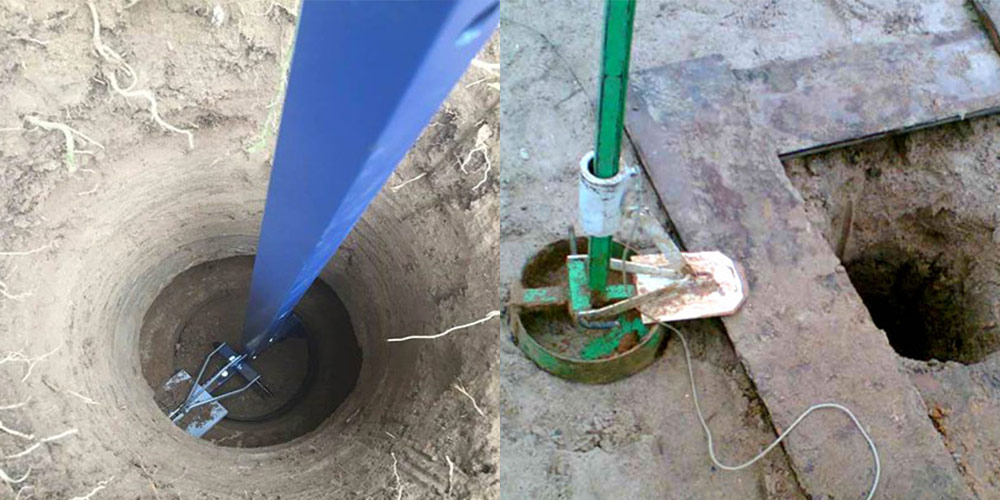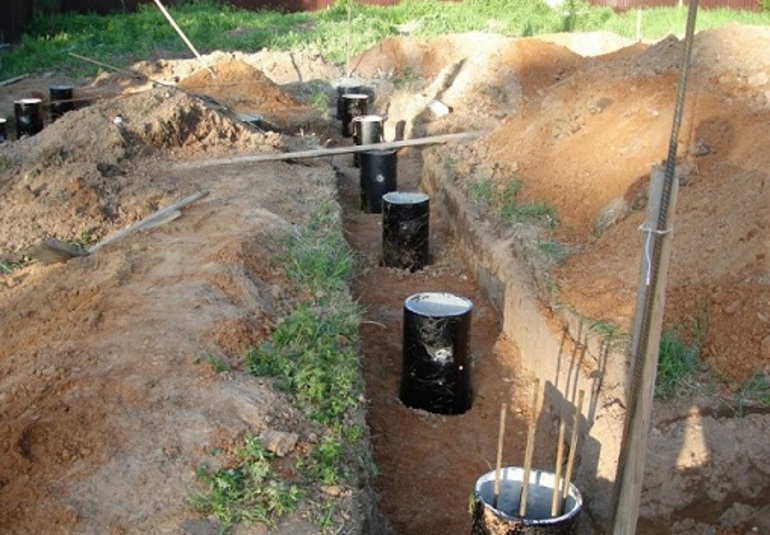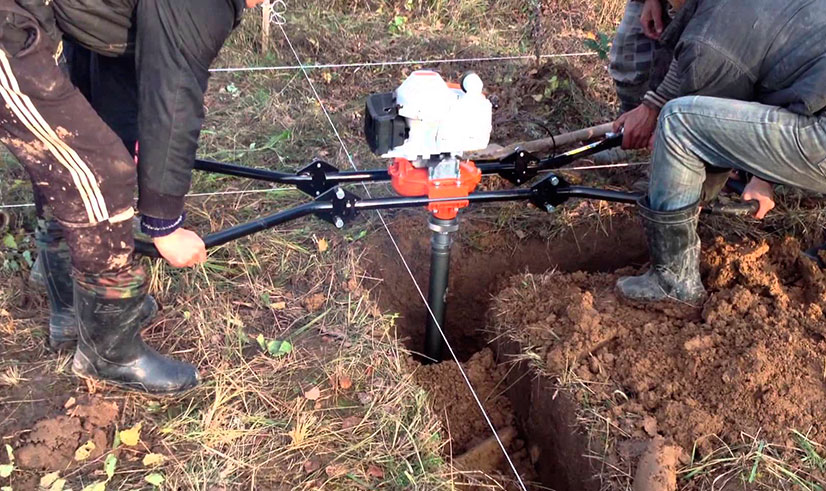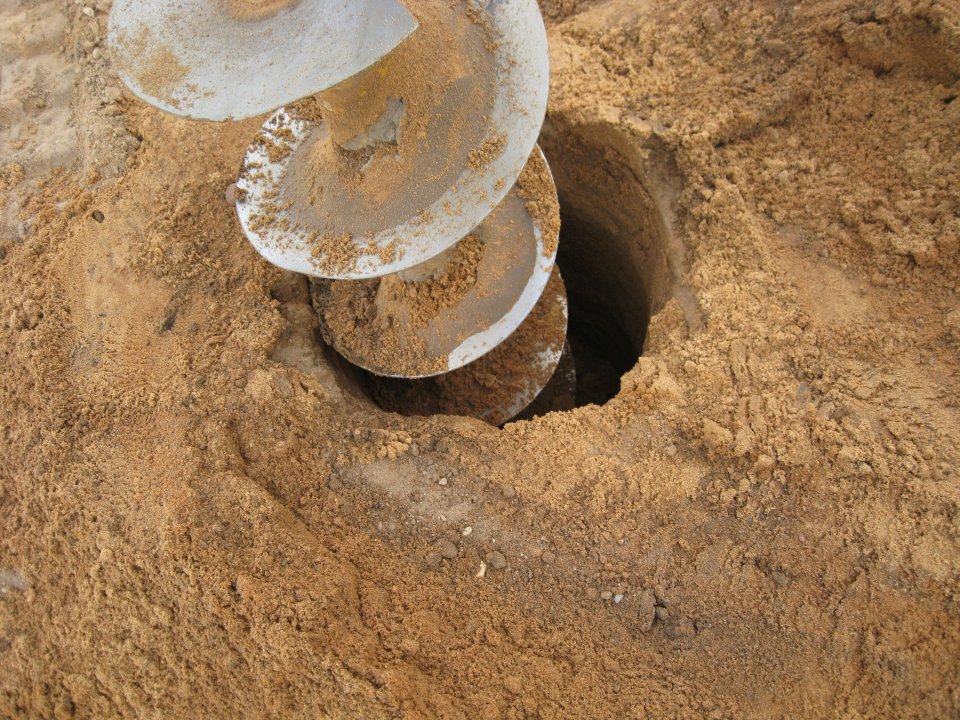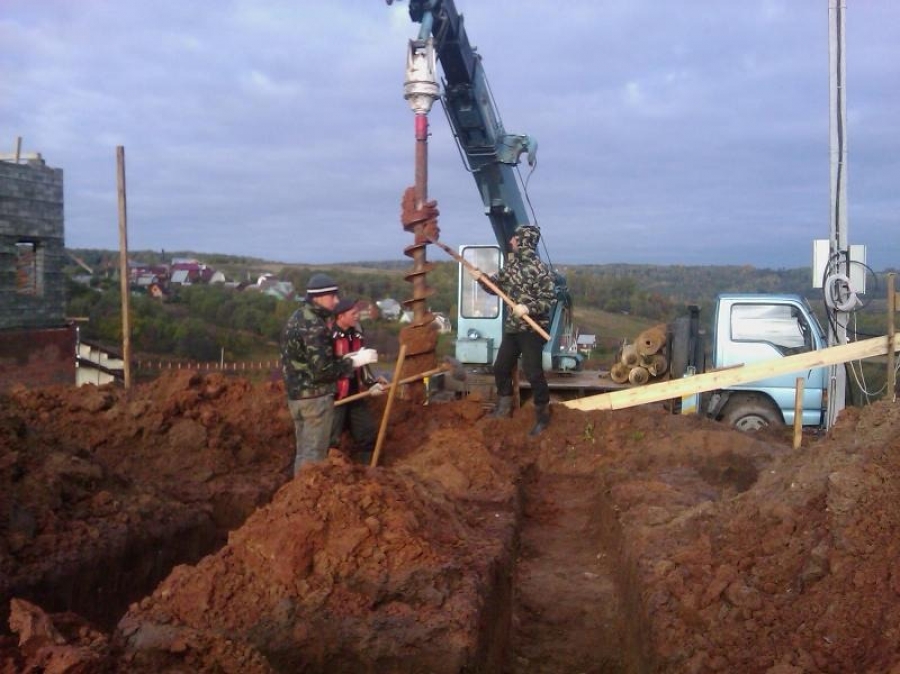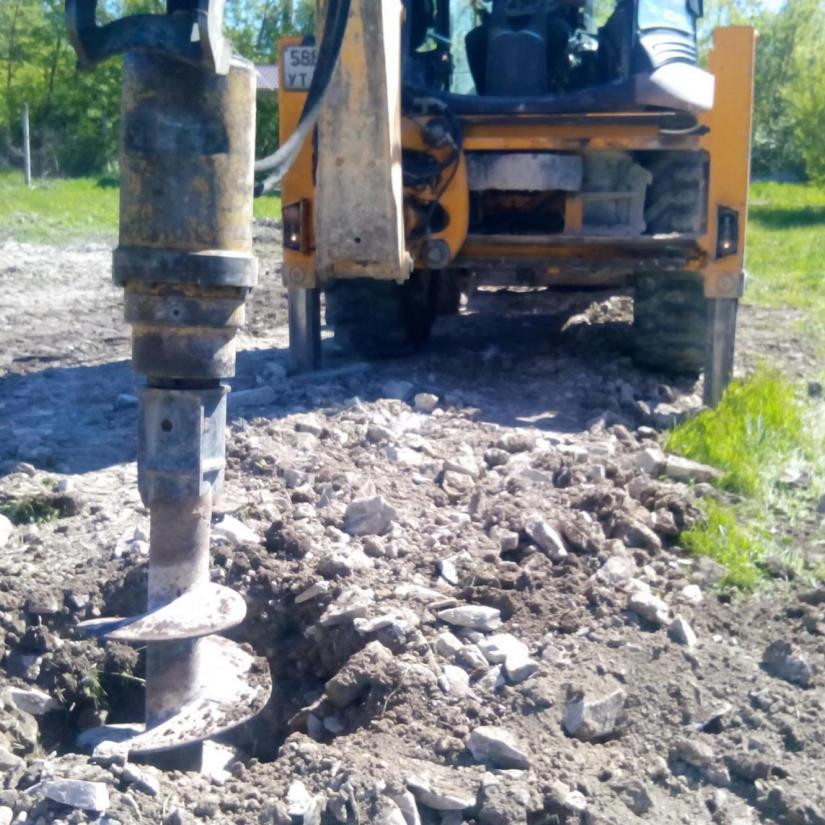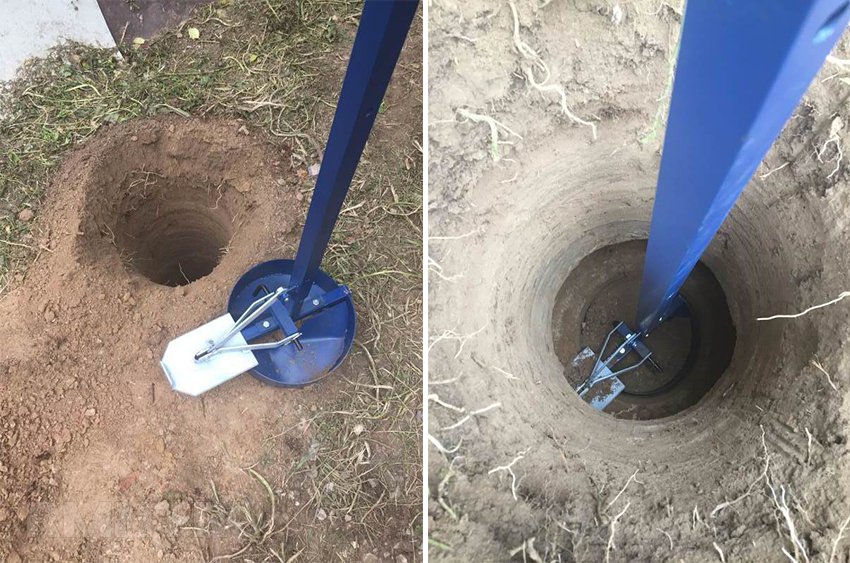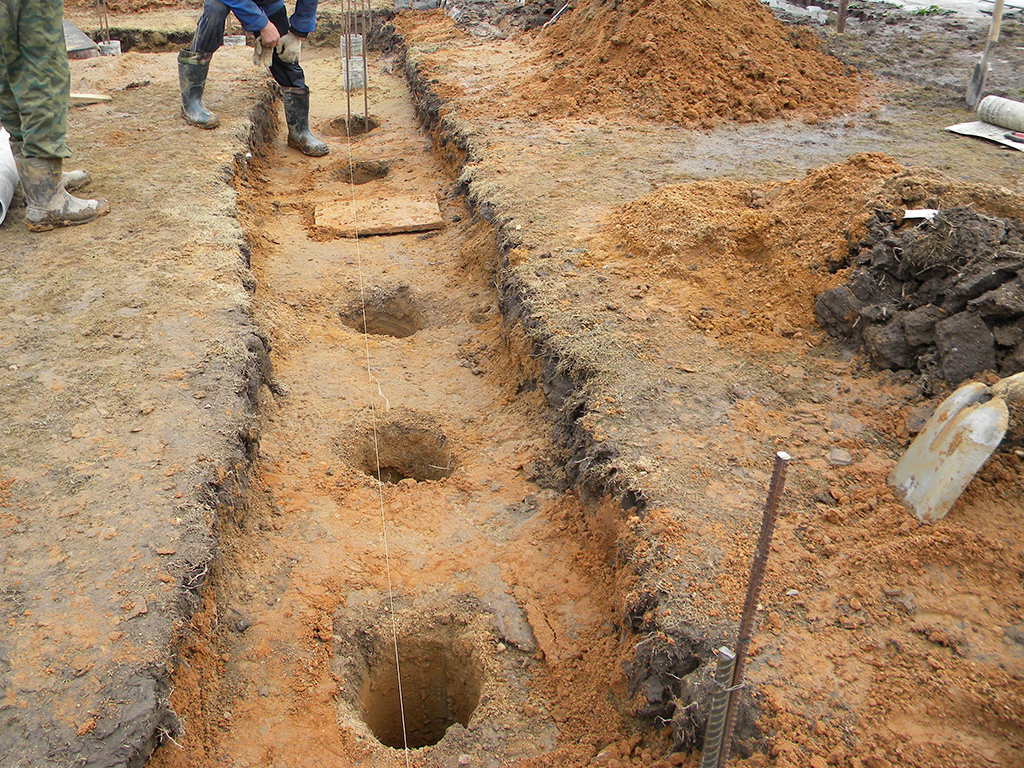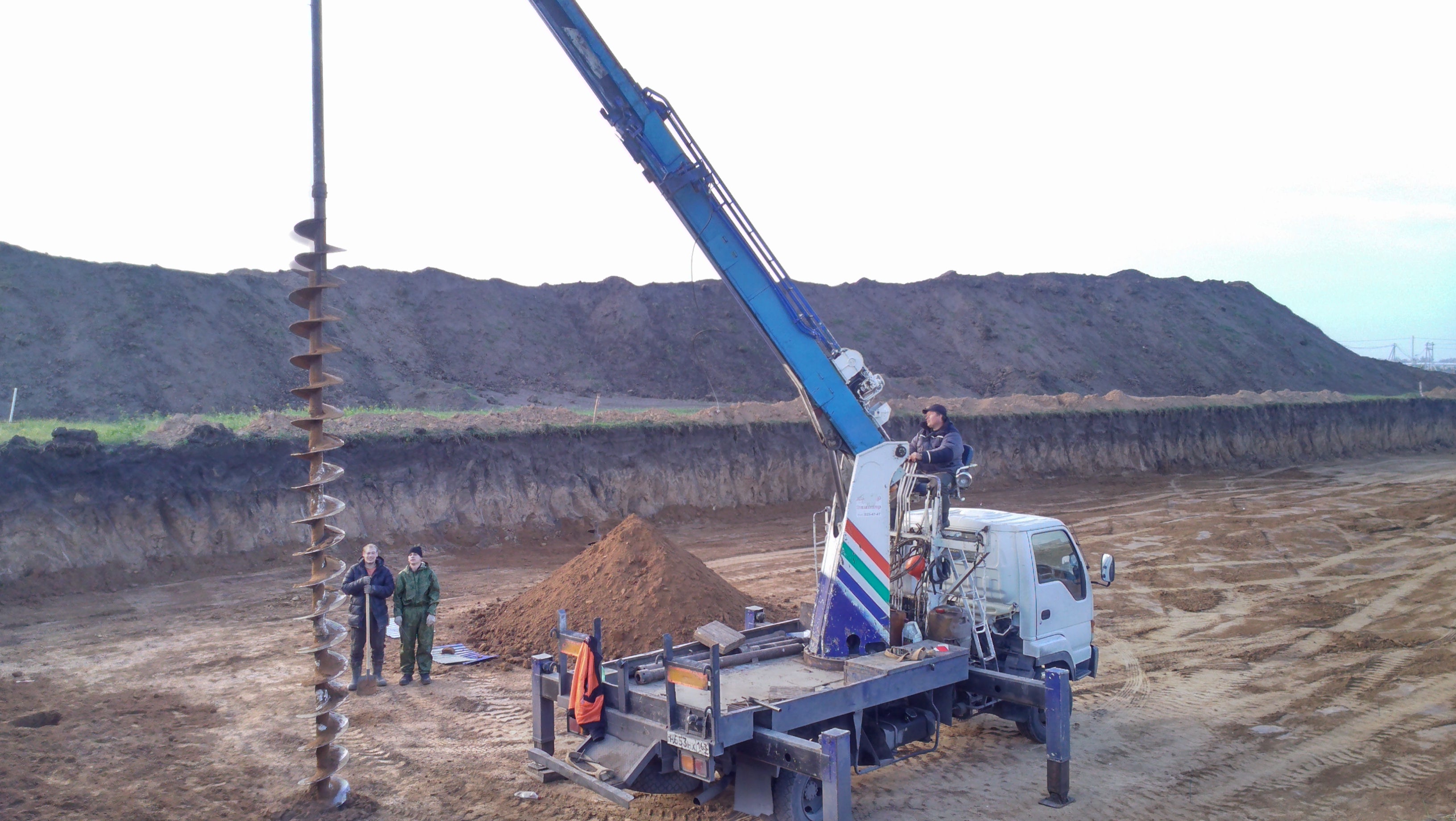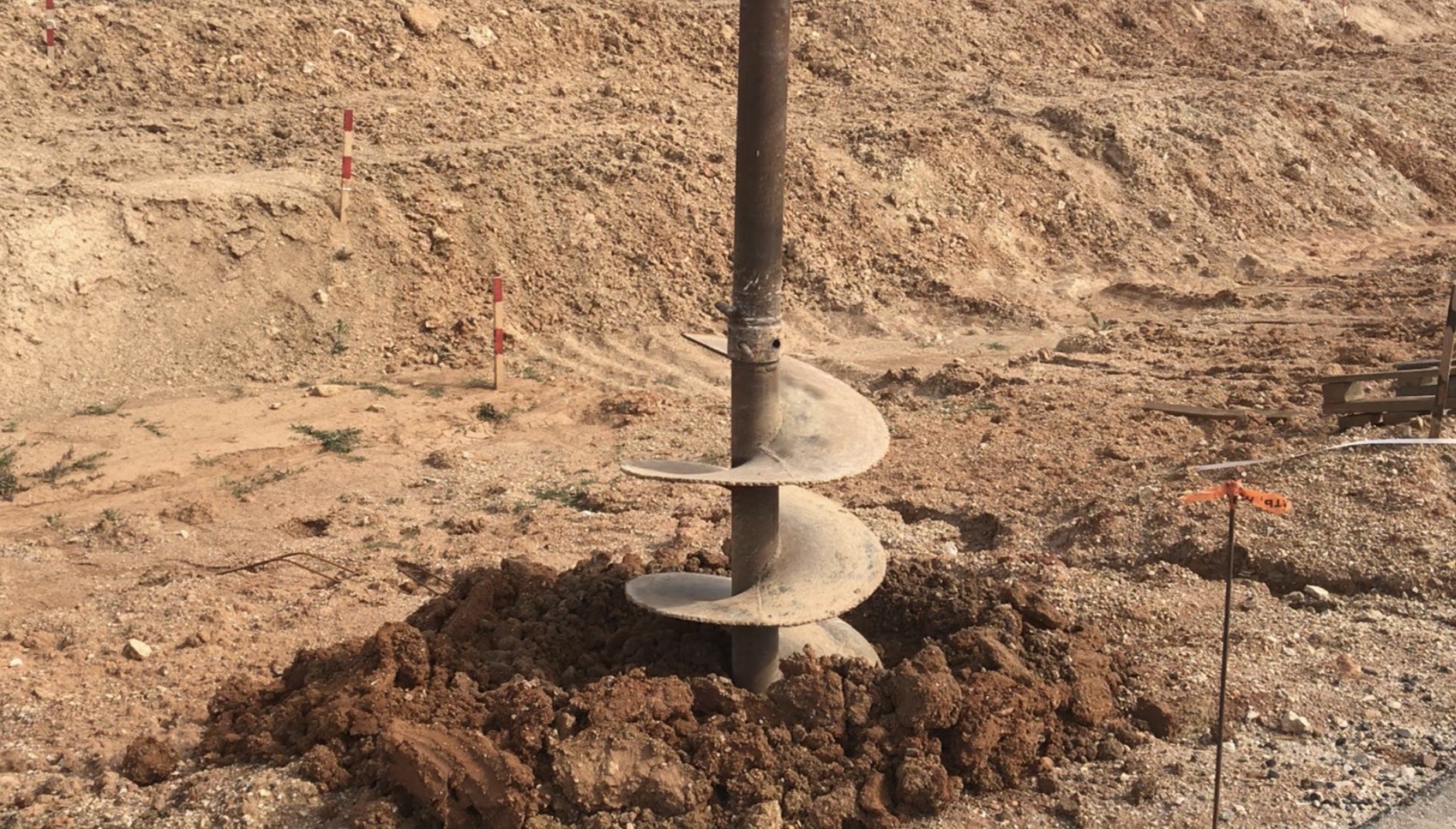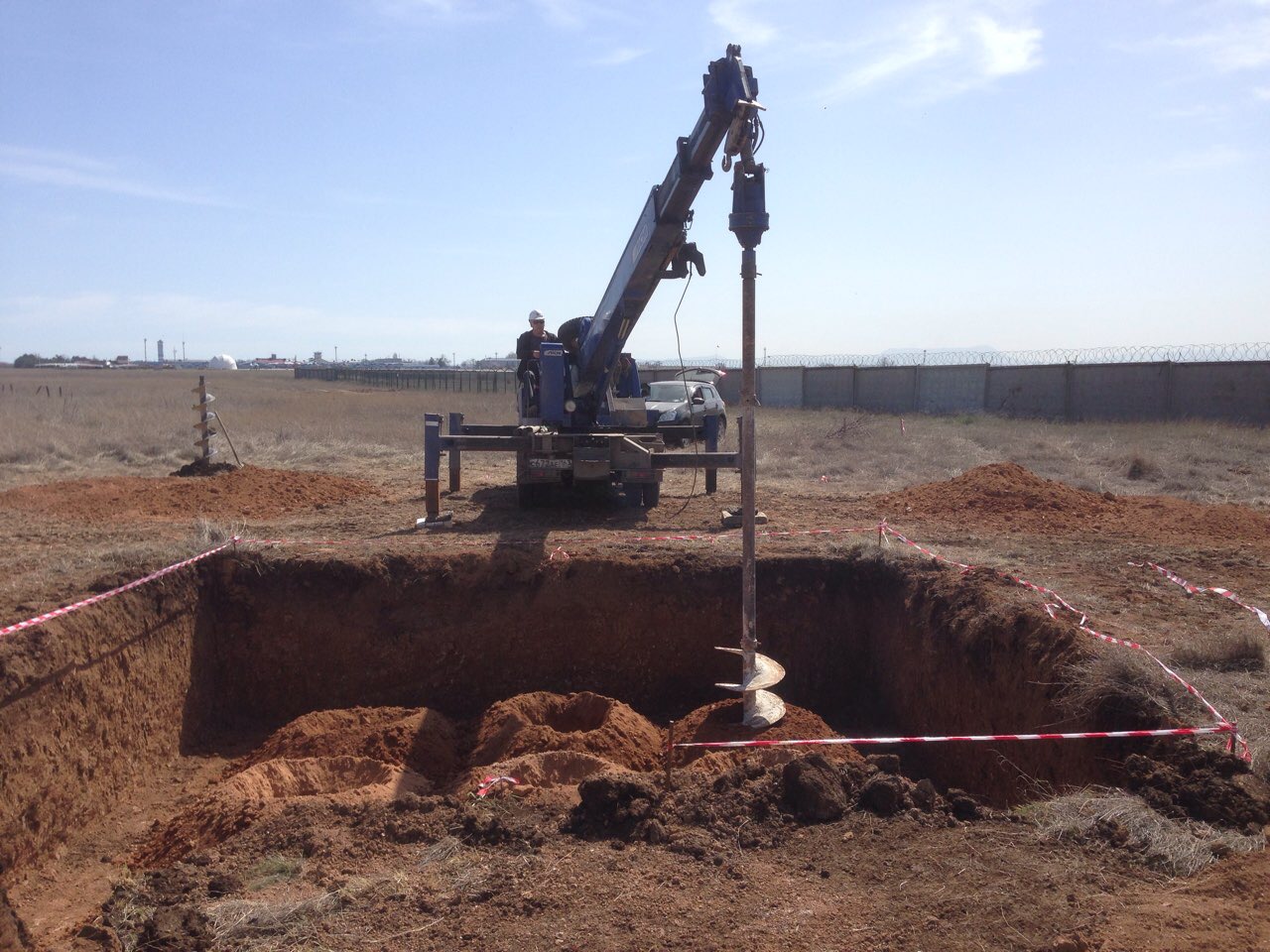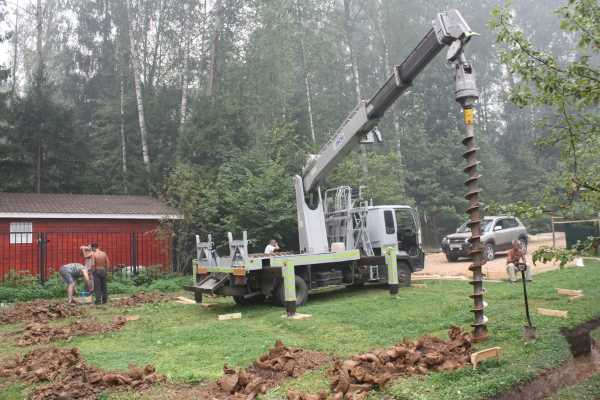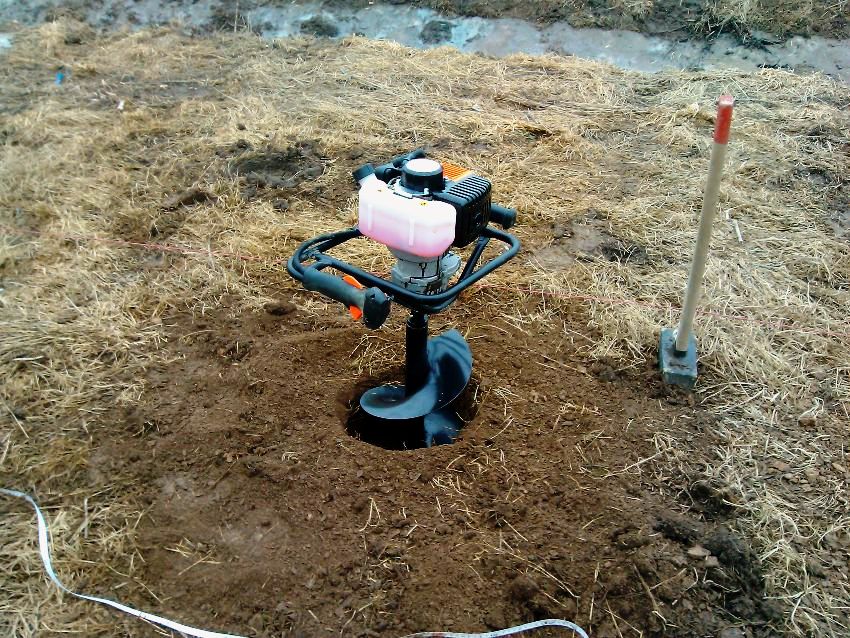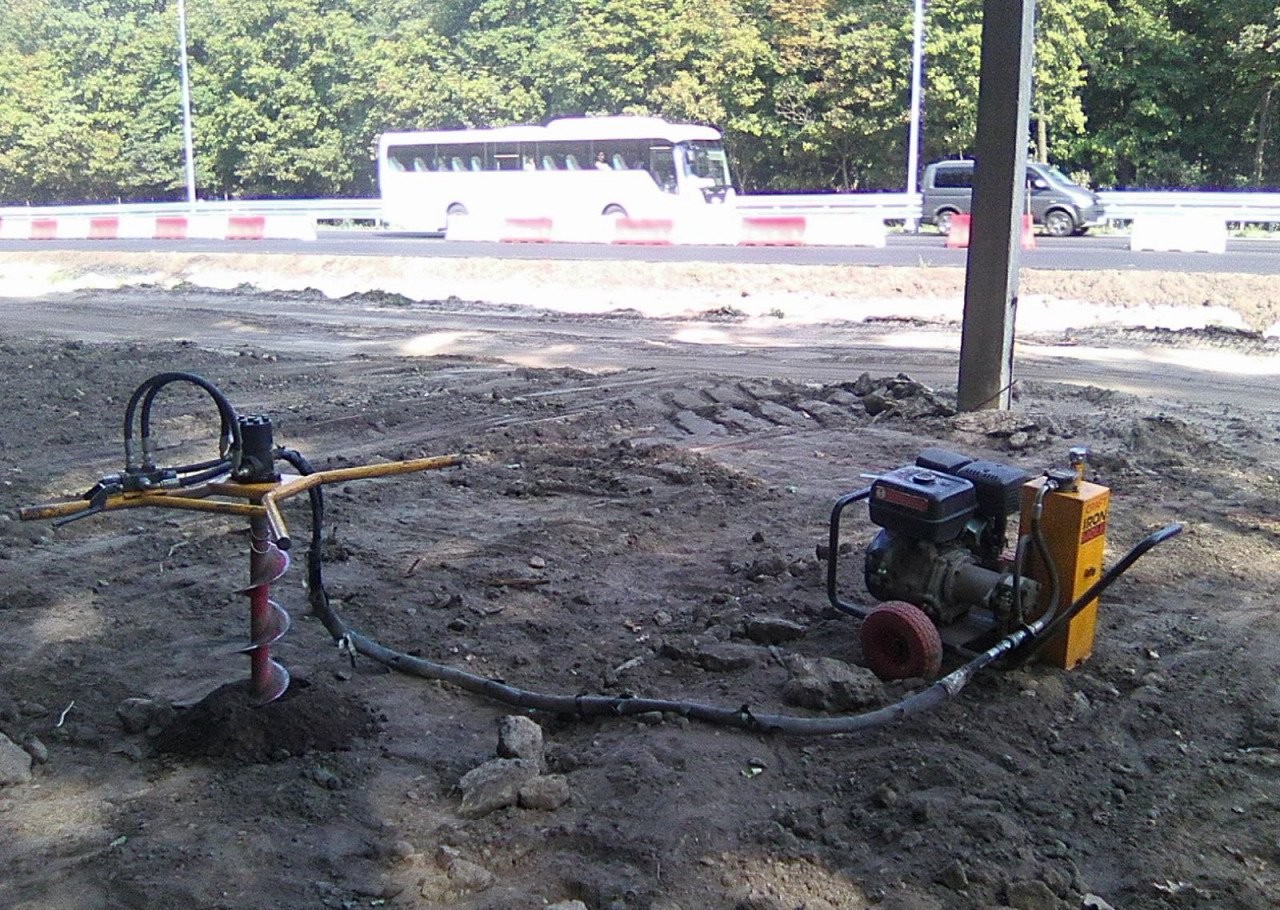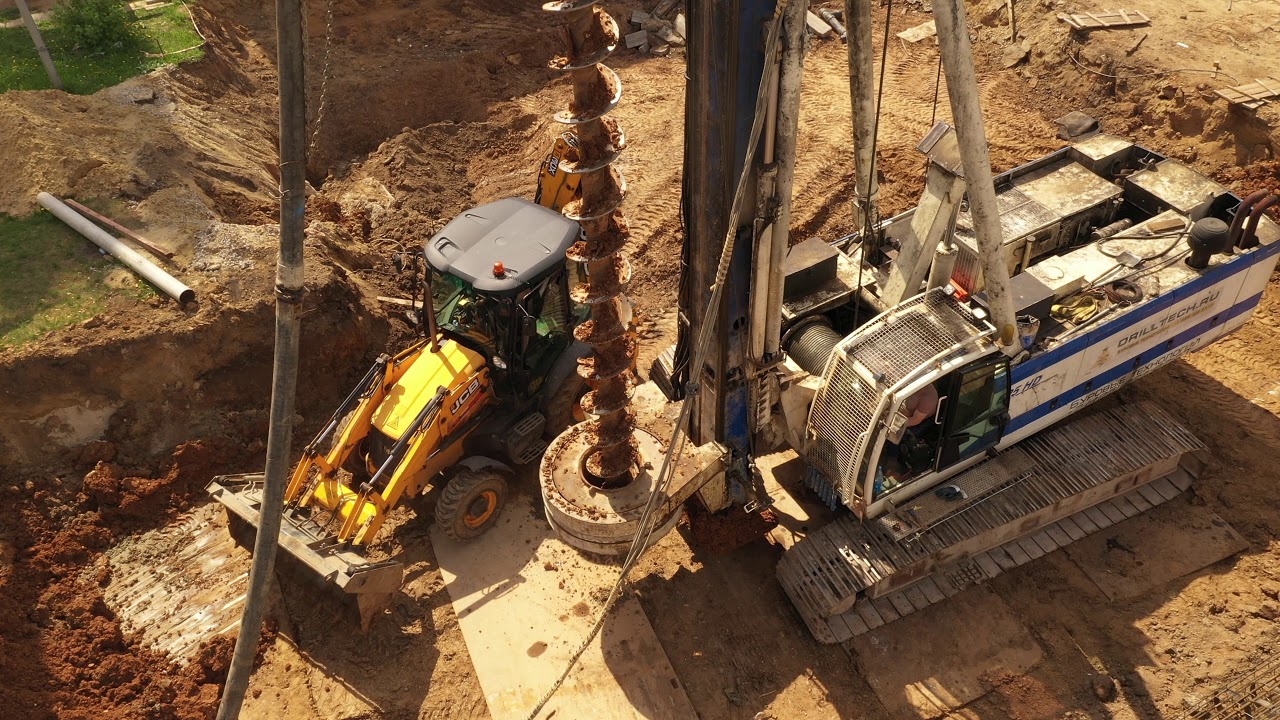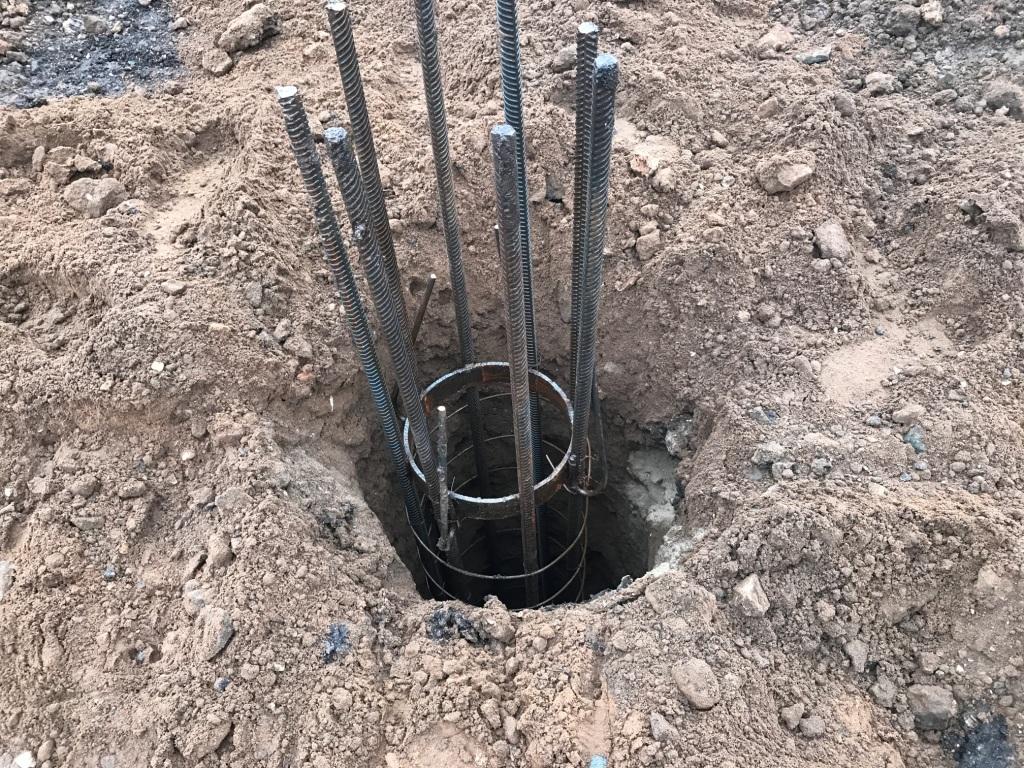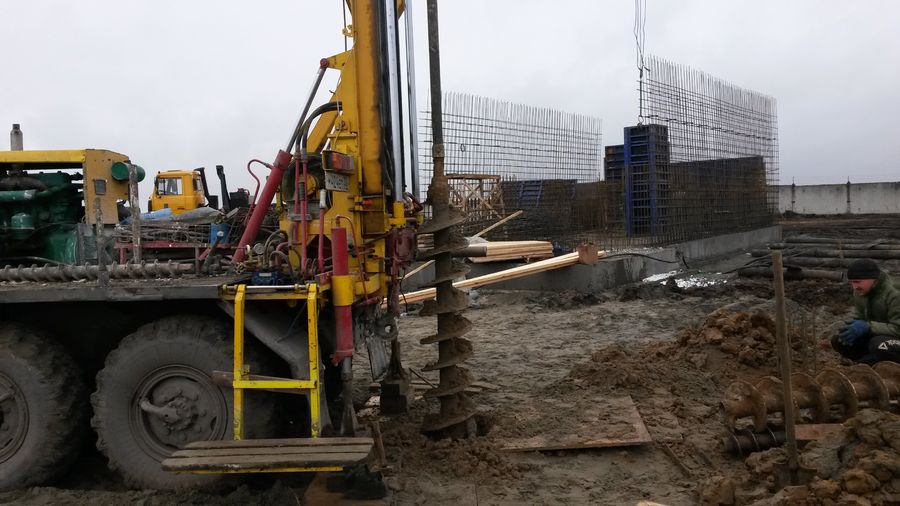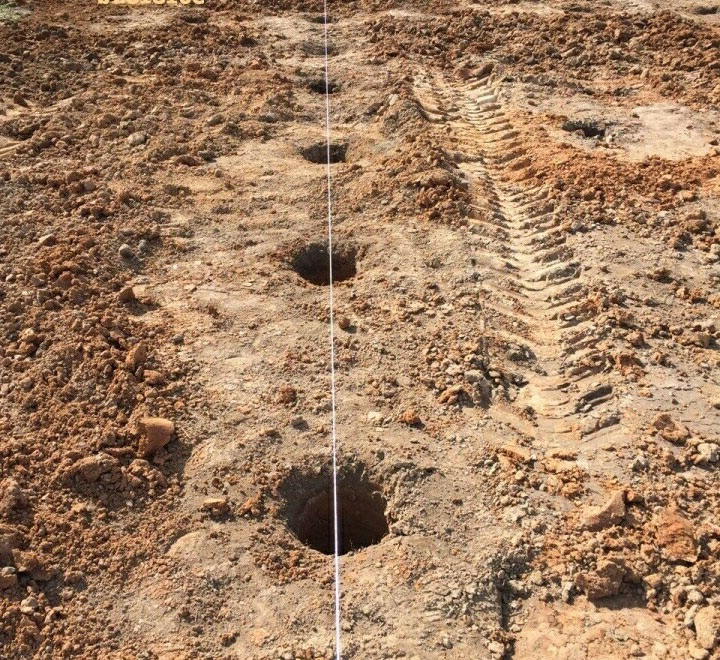Advantages of bored piles
- shortening the construction time, since after the installation of the piles there is no need to wait until the concrete gains its design strength;
- the possibility of using in permafrost conditions;
- relatively low cost of work and dynamic tests.
Due to their high strength characteristics, bored piles are used in plastic-frozen soils of the Far North. For their device, wells are drilled mechanically. The diameter of the wells is one to two centimeters less than the minimum cross-section of the pile. Piles are driven in any way to a depth equal to the depth of the drilled well.
Bored piles, bored piles or bored piles can be made with both internal cavities and a solid structure. Naturally, the cost of piles with internal cavities is cheaper than solid ones due to the reduction in the amount of material used. However, the strength characteristics of hollow structures remain at the proper level, which allows them to be used for the construction of bored foundations. The piling technology does not differ from the construction of solid drilled products.
For the strengthening of reservoirs and the construction of retaining walls, rectangular structures, both solid and hollow, are traditionally used. For driving into soft soils, hollow or solid round bored piles are used. They are available with both open and closed ends.
Instruments
Pile drilling techniques can be very diverse. In most cases, vehicles with a wheeled, auger or caterpillar drive are used for this purpose.
To arrange a well for a pile, use:
- universal drilling rigs for wells;
- piling drilling units;
- drilling and crane complexes.
The differences between them in general and between individual models in particular are determined, first of all, by the level of productivity, the specifics of the control bodies and the size of the wells created. In terms of the cost of work and the availability for non-professionals, it is difficult to find analogues of a hand drill.
Low productivity is justified by the fact that expensive equipment and trained specialists are not needed. But in those situations where speed is important or the soil is very difficult, it is worth using a yamobur. Mounting of such devices is carried out on wheeled and tracked platforms. If the conditions are not easy, even highly specialized equipment has to be involved.
A drill helps to simplify the work on your own. The reinforced construction of the popular TISE version allows for an enlarged heel at the lowest point. As a result, the base goes below the freezing zone, and with the same bearing characteristic, the solution consumption is reduced by 3-4 times compared to alternative technologies. In addition, for a foundation identical in properties, it will be necessary to install fewer piles than usual, and their diameter will be reduced.
Advantages and disadvantages
If the site intended for construction is located on soft ground or the possibility of using heavy special equipment is excluded, drilling of wells under the foundation must be used. This design has its advantages:

- A high degree of bearing capacity of the base due to the support on a solid soil layer.
- Withstands loads of several tons even on soft unstable soils.
- Affordable technology cost for many.
- The ability to make a high-quality base in a fairly short time.
- The construction is carried out in small areas and at any time of the year.
- The minimum amount of equipment is involved.
- Supports are installed both vertically and at an angle.
- The lower parts of the piles are located below the level of soil freezing, which increases the stability and strength of the object under construction.
- Concrete consumption is significantly reduced when compared with other methods of making bases.
- The minimum level of vibration during the operation of the facility.
When erecting a bored foundation, there are no dynamic effects on the soil, so construction can be carried out safely even in dense urban areas. However, there are no absolutely ideal technologies, and the pile foundation is not without its drawbacks:
- The need to use special equipment, albeit in small quantities.
- Control over the ongoing technological process.
- Difficulty in calculations.
- Before starting work, it is necessary to analyze the soil on the site for construction. A well-performed analysis will determine the service life of the selected type of foundation. This will require the consultation of geologists.
- For the manufacture of piles, it is necessary to choose only high quality material.
Prices for drilling leader wells
The construction company "Bogatyr" offers its customers one of the lowest prices for leader drilling in Moscow and the region.
We calculate the cost of creating a leader well based on its depth - the base price of one running meter of drilling is 300 rubles (it may vary depending on the type of soil and the amount of work).
It is also necessary to take into account the price for the relocation of construction equipment - in Moscow and the region it is 20 thousand rubles (relocation to neighboring regions is possible, its cost can be clarified by contacting the representatives of the company).
Leader drilling allows piles to be vertically mounted on a site with a dense soil composition. This method is most relevant in winter, since it facilitates the process of driving in the sheet pile during the construction of the foundation.
Leader drilling makes it possible to reduce the resistance of the earth's surface, as well as to set the entire structure to a considerable depth. In addition, vibration and noise levels are reduced during installation.
Characteristic features of a pile foundation
Often it is necessary to carry out construction on clay or loamy, loose soils with admixtures of humus and peat, as well as soils saturated with liquid. With such characteristics of the site, it is not recommended to carry out capital construction of objects. In this case, the ideal option would be to manufacture a pile foundation, which requires drilling holes for the foundation.
The main feature of this design is the unusual way of making it. Before installing the piles, deep holes are drilled in the soil, which are then filled with concrete. The depth should be below the layer of freezing of the soil and is calculated in accordance with the characteristics of the terrain and climate.
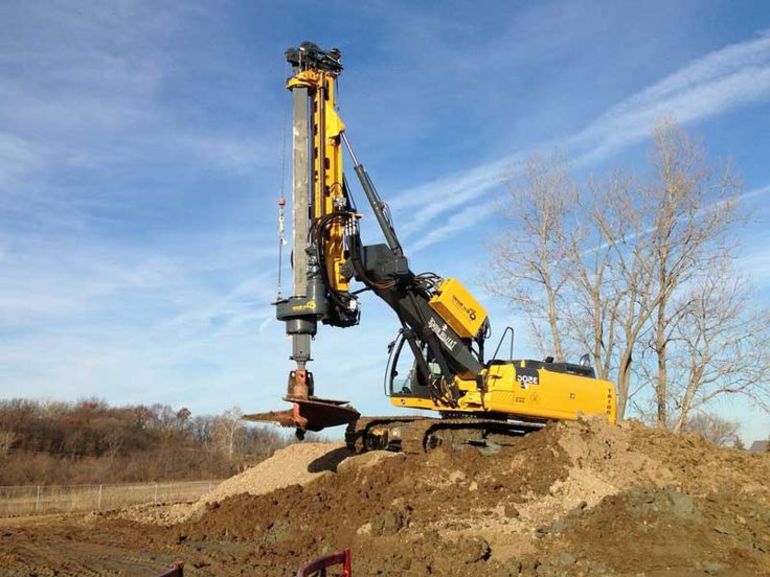
Experts advise drilling to the clay layer. First, you need to determine the depth of its location and only then carry out the process. However, it is not recommended to deepen the piles too much.
Therefore, before proceeding with the installation of the foundation, it is necessary to carry out the preparatory stage of work. It includes such a procedure as taking a soil sample at a construction site to determine the type of foundation that will best fit this object.
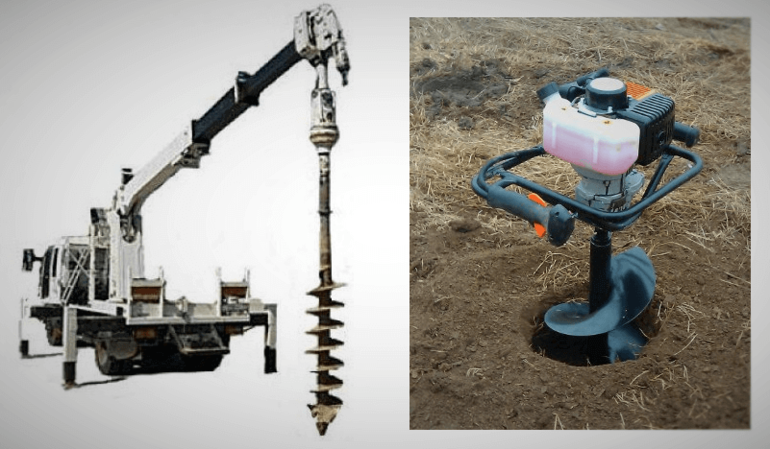
Experienced builders use a very simple method to increase the bearing surface of the pile. When pouring the foundation, the formwork is slightly raised, in which the concrete solution is placed, part of it is poured out and due to this, a wider surface is obtained.
Pile foundations are used in the construction of private houses, civil, industrial buildings and structures. The construction of such structures, in comparison with other types, does not require large funds, therefore it is considered economically profitable.
The technology of the process consists in transferring the load from the base of the object to a harder layer of soil, which is penetrated by drilling wells followed by pouring concrete.
Drilling for foundation construction
When building a country house, the most important element is the foundation. Now there is a way to significantly reduce the cost of its construction. Many time-consuming processes have been mechanized with pit augers. As a result, foundation drilling significantly reduced the initial construction phase.
The peculiarity of such a foundation is the ability to achieve the most durable soil layers, ensuring maximum stability of the building and the ability to avoid its deformation when the soil subsides. The foundation, erected by piling after drilling, is characterized by high technical characteristics and versatility. Such a foundation can be built for any type of building.
For an average house, at least 30-40 piles are required - for a yamobur, this work is for one day. At the same time, holes with a diameter of 250 mm or more will be drilled for their installation. up to 600 mm., depth from 1.5 meters to 2.5 m., in compliance with all marking lines and strict verticality.
The first step is to determine the location and thickness of the piles. It depends on the level of soil freezing. The final figure should exceed this mark by 1.5 m. In order for such calculations to be correct, you need to use the geological documentation regarding the area of \ u200b \ u200bthe location of the building. When the depth of the wells is greater than the mark that is indicated for the area, then there is no need to worry about the reliability of the foundation in the snow season.
Drilling technology
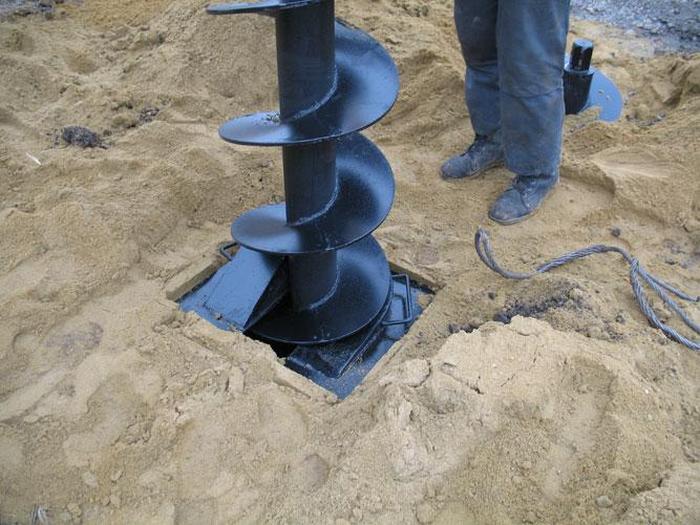 To avoid the collapse of the earth, you need to strengthen the well with a metal pipe
To avoid the collapse of the earth, you need to strengthen the well with a metal pipe
The drilling process today is in great demand for laying the foundation. To avoid the collapse of the earth, you need to strengthen the well with a metal pipe. A large number of premises are built precisely on the basis of a pile element and a grillage. All this helps to achieve higher stability and strength, which is higher than that of a strip base under these conditions.
It should be noted that drilling maximally contributes to the creation of a stronger pile foundation and grillage in its structure. If you use this technique, then you can minimize the size of the load of the building on the soil. The foundations of a new building near an already erected one are laid due to the use of sheet piling. This action will save the building from additional pressure.
This action is quite in demand for construction work on unstable soil, which has a low level of density and increased seismic activity. The laying of such a pile foundation and grillage can occur in different seasonal periods. The most popular wells are considered to be bored.
Preparatory work
 An approximate plan showing the location of the foundation piles
An approximate plan showing the location of the foundation piles
Tools and building materials required for drilling holes (wells):
- Building level.
- Hand-held drilling tool (drill or motor-drill).
- Armature.
- Bayonet shovel.
- Rope, pegs.
- Edged board.
- Hammer and nails.
- Waterproofing material (roofing material).
- Concrete mix.
Before starting to drill holes or wells, it is necessary to perform calculations that take into account:
- The total mass of the building.
- Characteristic features of the construction site.
- Seasonal wind loads.
- Height of soil freezing.
- The depth of the groundwater table, as well as changes in the level depending on the season.
- Characteristics of the soil at the construction site.
Drilling holes (wells) can be done when all the calculations are done. For this purpose, markings are made at the construction site with the help of rope and pegs. After that, it is necessary to mark the location of all piles.
The construction of the foundation, as well as drilling holes, is a very laborious process. This work is best entrusted to professionals. Indeed, the durability of any structure depends on the quality and strength of the base.
Drilling pits for piles with your own hands
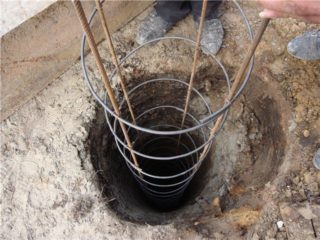 Drilling wells for piles is a fairly popular type of work in modern construction. The high reliability of pile foundations won over most of the designers and developers. Piles began to be used even where the soil allows the construction of strip and other foundations. Pile construction, like any other, requires geological surveys, determining the locations of underground utilities and meticulous engineering calculations. Based on their results, the type of piles used and the installation methods are determined: bored, bored, screw, driven.
Drilling wells for piles is a fairly popular type of work in modern construction. The high reliability of pile foundations won over most of the designers and developers. Piles began to be used even where the soil allows the construction of strip and other foundations. Pile construction, like any other, requires geological surveys, determining the locations of underground utilities and meticulous engineering calculations. Based on their results, the type of piles used and the installation methods are determined: bored, bored, screw, driven.
Bored piles
More recently, foundations of this type have been used to lay the foundations of construction projects in the port and bridge areas.
More recently, foundations of this type have been used to lay the foundations of construction projects in the port and bridge areas. But with the development of civilization, the pile method with the grillage penetrated into the household industry. Today there are three main types of bored grillage:
- The belt type cannot be installed in soil with little moisture, unlike the pile type. It should be noted that this is a shallow foundation, the depth of which does not exceed 1 meter.
- The walls of the grillage are able to withstand strong water pressure, so you can safely lay foundations in watered or cohesive soils;
- The installation process is carried out in all climatic conditions using a casing pipe.
Construction process on low-moisture and cohesive soils
Mounting piles and grillage bored method on soil with a low percentage of moisture is carried out using a special device for drilling. The mechanism of its work lies in the rotational action of the apparatus of the apparatus, which makes the hole. In order to prevent the collapse of the soil, it is necessary to install a metal pipe.
When the required depth is reached, it is necessary to immerse the frame from the reinforcement and fill everything with a concrete solution. Concrete must be placed vertically by placing pipes. Concrete pipeline to seal the joints of the structure.
The concrete mix is made at the construction site, and the delivery process is centralized. At the end of the action, the pipe is carefully removed from the well. The grillage can be compacted with special vibrators, which help to strengthen the reception funnel.

